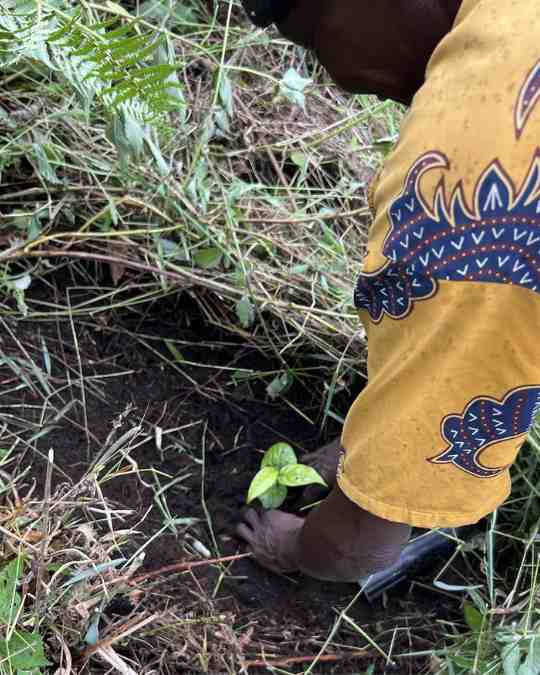From 2021 through 2024, we planted 2,433 ha. We aim to plant at least another 5,067 ha by June 2028.
Deforested decades ago by smallholder farmers, the corridor was largely abandoned because of the poor yields on the steep slopes, and the trouble of getting crops out to village markets. Only about 6% was being farmed when the project started.
In the long dry seasons, wildfires sweeping through thick grass and bracken have kept the rainforest from regenerating naturally.

A year before planting 1,000 ha, 4 nurseries are situated strategically, carved out of the mountain side near a water source with access to 250 ha of the total area.
A planting camp, with solar electricity and TV for football, is built to house 12 nursery attendants year-round and planting teams of 300 for weeks at time for clearing, planting and weeding from December through June in the rainy season. The camps are occupied for four years for follow on weeding and replanting.
The camps are supplied by porters. All food and materials must be ferried by foot up and down steep slopes as far as 14 km, over 30,000 single trips in Year 3.
Each nursery has an average of 550,000 seedlings, a mixture of up to 100 altitude-appropriate species, many rare species whose seeds and wildlings are collected from the forest patches in the corridor.
Annual planting areas are mapped on a hectare grid. With GPS telephones, planting teams locate blocks and access specific data on slope class, which determines the spacing between seedlings down the planting line. All activities are logged and uploaded, including the number of surviving planted seedlings and the wildings sprouting up naturally in each block.
At the end of the dry season, groups of 15 clear the steep terrain, where grasses and bush are often over their heads.
A planting line is then marked by placing a steel cable, selected for the slope class, between bamboo poles.
Small pits, 30 x 30 x 30cm, are dug along the line
Baskets of seedlings are carried to the field.

Seedlings are unpotted and planted in the pits.
For the next four years, teams of 15 weed fields two or three times each season and replace any dead seedlings.
After planting and each weeding, a field enumerator and a group leader spend several hours walking up and down two planting lines, counting every seedling and wilding in the specific grids. This data is uploaded, giving us granular survival data on each field.
